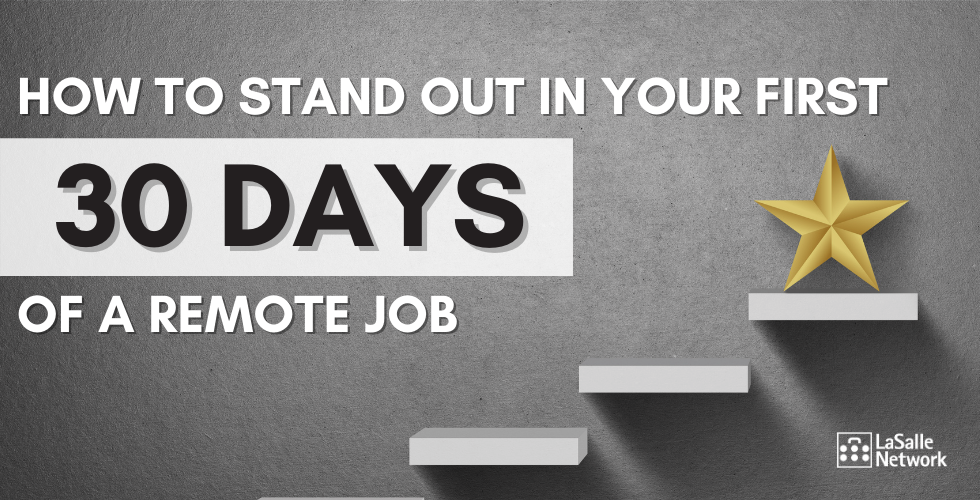Starting a new remote job in 2024 presents unique opportunities and challenges. As the workforce continues to embrace hybrid models and digital-first approaches, standing out in your first 30 days requires a strategic approach. Here’s how you can make a lasting impression:
Before Day 1: Preparation is Key
Before your first day, take time to thoroughly prepare. Start by researching the company’s culture and values. In 2024, many companies emphasize their digital presence, so review their website, social media channels, and recent news articles to understand their mission and any recent projects or announcements. Additionally, consider reaching out to your future colleagues on LinkedIn with a simple introduction message to set a positive tone.
Setting up a productive home office is crucial. Invest in quality equipment if your organization does not provide it, such as a reliable computer, high-speed internet, desk and comfortable chair (seems silly but makes a difference!). . A comfortable and ergonomic workspace is essential for both productivity and health. Familiarize yourself with the software and tools your new company uses, such as project management tools, communication platforms, and any industry-specific applications. Lastly, review any onboarding materials provided by the company and set personal goals for your first week, such as completing training modules, meeting with your manager, and understanding your immediate responsibilities.
Day 1-7: Integration, Learning and Listening
In your first week, focus on integrating into the company culture and learning as much as possible. Attend all onboarding sessions and take detailed notes. Even with remote work, you need to make a point to introduce yourself to your team members, even if it’s through virtual meetings. Understanding team dynamics early on will help you navigate your role more effectively. Don’t hesitate to ask questions—this shows your eagerness to learn and understand the company’s processes.
Set up one-on-one meetings with your manager and key colleagues. Use these meetings to understand their expectations, responsibilities and how you will partner with them, preferred communication styles, and any immediate priorities. In 2024, remote work often involves using various digital tools for collaboration, so ensure you’re comfortable with platforms like Slack, Microsoft Teams, or Zoom.
Day 8-14: Establish Your Presence
As you move into the second week, start contributing to team projects. Identify any gaps or areas where you can add value, and be proactive in offering your assistance. Showcasing your skills early on can help establish your credibility. Make sure to communicate your progress regularly with your manager and seek feedback to ensure you’re on the right track.
Engage in company culture initiatives. Many companies in 2024 have virtual social events or interest groups. Participating in these activities can help you build relationships and feel more connected to the team. Additionally, staying active on internal communication channels can keep you informed about company updates and ongoing projects.
Day 15-30: Add Value and Build Relationships
In the latter half of your first month, focus on adding tangible value to your team. Complete assigned tasks efficiently and continue to seek out opportunities to contribute. Regularly update your manager on your progress and any challenges you’re facing. This not only demonstrates your work ethic but also ensures you receive the support you need, especially from remote work.
Build relationships with colleagues across different departments. Understanding the broader organizational structure can provide valuable context for your role and create collaboration opportunities. Take advantage of any mentorship programs or peer networks the company offers.
By the end of your first 30 days, aim to have a clear understanding of your role, key responsibilities, and how you can contribute to the company’s goals. Your proactive approach, eagerness to learn, and ability to integrate into the company culture will set you apart as a valuable team member.
Starting a new remote job? Let LaSalle Network guide you through the process. View our career resources and open positions here to ensure your success.





